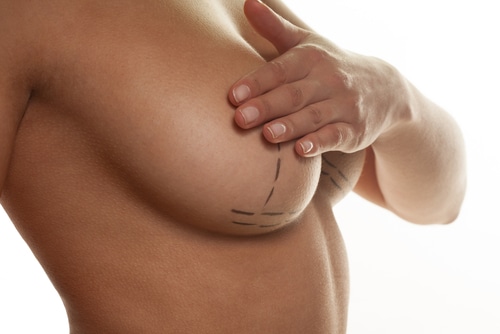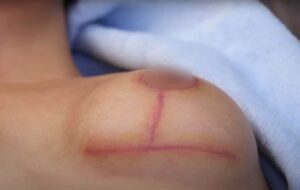Breast Implant Removal for Medical Reasons: Navigating Health Concerns

Deciding on breast implant removal is a significant step for many, driven by various personal and health considerations. This process involves not just the surgical removal of implants but also addresses concerns related to aesthetics, well-being, and recovery post-procedure. As individuals seek information on this topic, clarity about the reasons behind removal, the procedure itself, and what one can expect during recovery becomes paramount. This blog aims to shed light on these aspects, providing valuable insights for those contemplating or preparing for breast implant removal.
Reasons for Breast Implant Removal
Health Concerns
Many women decide to remove their breast implants due to health issues. These can include implant rupture or leakage. When an implant breaks, its contents might spread inside the body. This can cause pain and discomfort.
Leakage is another serious concern. It happens when the liquid from the implant leaks into surrounding tissues. This can lead to inflammation and even more severe health problems.
Cosmetic Dissatisfaction
Sometimes, women are not happy with how their implants look or feel. They may want a change in size or shape after seeing the initial results. Over time, personal preferences change too.
Another reason is aging or weight fluctuations that alter how implants appear. As bodies change, implants might not fit the desired aesthetic anymore.
Lifestyle Changes
Lifestyle shifts often influence the decision to remove breast implants. Some women choose a more natural lifestyle and no longer want foreign objects in their body.
Active lifestyles might also prompt removal decisions. For instance:
-
High-impact sports could be uncomfortable.
-
Certain physical activities become challenging with larger breasts.
Breast Implant Illness and Diagnosis
Symptoms Overview
Breast implant illness (BII) presents with varied symptoms. Patients often report fatigue, chest pain, and cognitive difficulties among others. These health issues can significantly impact daily life.
The range of symptoms includes, but is not limited to:
-
Fatigue
-
Chest pain
-
Headaches
-
Joint and muscle pain
-
Cognitive difficulties
These symptoms are subjective. They differ from one person to another, making diagnosis challenging.
Diagnosis Challenges
The absence of standardized diagnostic criteria complicates the identification of BII. This lack makes it hard for top doctors to immediately link symptoms to breast implants.
Patient history becomes crucial in diagnosing BII. Tracking symptoms over time helps in understanding their progression. It’s important for patients to note any changes in their health after getting breast implants.
In some cases, infections related to the implant might suggest BII. However, not all patients experience this symptom.
Given these challenges, a detailed discussion between patient and doctor is vital. Both parties must work together closely for an accurate diagnosis.
Preparing for Breast Implant Removal Surgery
Medical Evaluation
Before the surgery, a thorough medical evaluation is necessary. This includes tests to ensure you’re fit for the procedure. Your plastic surgeon will guide this process.
Patients must undergo various health checks. Blood tests and chest X-rays are common requirements. These help assess if your body can handle the surgery and recovery.
Home Care Arrangement
After surgery, you’ll need someone to assist you at home. It’s crucial for a smooth recovery.
Arrange for a family member or friend to stay with you. They can help with daily tasks and ensure you follow post-surgery care instructions properly.

Medications & Lifestyle
Adjusting medications and lifestyle habits is vital before breast implant removal. Surgeons provide specific guidance based on individual needs.
Stop certain medicines as advised by your surgeon to reduce bleeding risks during surgery. Also, quitting smoking is essential as it can hinder healing.
Adopting healthy eating habits improves recovery chances too.
Surgical Techniques for Breast Implant Removal
Simple Removal
Simple removal is the most straightforward approach. The surgeon takes out the implant without removing surrounding tissue or capsule. This method suits those with no complications, such as capsular contracture.
Patients usually experience a quicker recovery with this technique. It’s less invasive and involves fewer risks than more complex procedures.
Total Capsulectomy
Total capsulectomy involves removing both the implant and the scar tissue capsule around it. Doctors recommend this when scar tissue causes problems like pain or distortion.
This method can help ensure that problematic scar tissue does not remain to cause further issues. However, it requires more surgical skill and may lead to a longer recovery period.
En Bloc Resection
En bloc resection is the most comprehensive option. The surgeon removes the implant and its surrounding capsule in one piece. This technique is often used if there’s suspicion of silicone leakage or if trying to eliminate all traces of foreign material from the body.
It’s considered by many as offering peace of mind but comes with higher risks due to its complexity.
Choosing between these options depends on various factors including reasons for removal and medical advice. Managing scar tissue effectively during surgery is crucial regardless of which technique is chosen.
Recovery Process and What to Expect
Recovery Timeline
Recovery after breast implant removal varies. Most patients need a few days to several weeks for full healing. The initial days are crucial.
Rest is key during this period. Patients should follow their surgeon’s care instructions closely. This helps speed up the healing process.
Activity Restrictions
After surgery, there are temporary restrictions. These include avoiding heavy lifting and strenuous physical activities.
Patients must adhere to these guidelines to prevent complications. It ensures a smoother recovery journey.
Monitoring Health
Monitoring for signs of infection is essential during recovery. Any unusual symptoms should prompt immediate discussion with a healthcare provider.
Complications are rare but can happen. Early detection and treatment lead to better outcomes.
Risks and Benefits of Breast Implant Removal
Reduced Risks
Breast implant removal offers significant health benefits. One key advantage is the reduced risk of future complications related to implants. These complications can include rupture, shifting, or infection. By removing implants, individuals eliminate these risks.
Another benefit is immediate relief from symptoms associated with breast implant illness. This condition includes a range of symptoms like fatigue, chest pain, hair loss, and more. Many patients report feeling better shortly after surgery.
Potential Complications
However, breast implant removal isn’t without its challenges. There are potential complications tied to the procedure itself. These can include infection, bleeding, or adverse reactions to anesthesia.
Moreover, there’s often a need for additional surgeries post-removal for cosmetic reasons. The original shape of the breasts might not return immediately after removal due to skin stretching or other factors.
Impact on Appearance and Sensation Changes
Breast Shape
After breast implant removal, changes in breast shape and size are common. The skin may not snap back if it has stretched. This can lead to sagging or an uneven appearance.
Options like lifts or fat grafting can help restore a more natural look. These procedures adjust the tissue and skin for better contour.
Skin Elasticity
Skin elasticity decreases with age. After removing implants, this can become more noticeable. The breasts might appear less firm than before.
Staying hydrated and using moisturizers can improve skin condition somewhat. However, significant improvement often requires medical intervention.
Nipple Sensation
Sensation in the nipple area may change after surgery. Some people experience increased sensitivity while others notice numbness.
These changes can be temporary or permanent. It varies greatly from person to person.
Aesthetic Restoration
There are ways to address changes post-implant removal:
-
Breast lifts: They remove excess skin and elevate the breast’s position.
-
fat grafting: Adds volume by transferring fat from another body part to the breast.
Both options aim to enhance appearance but come with their own risks and benefits.
Psychological Effects and Confidence Post-Removal
Mental Health
Many individuals report an improvement in mental health symptoms after breast implant removal. Studies indicate a symptomatic improvement for those who experienced distress from their implants. This relief often stems from the elimination of physical discomforts and concerns about long-term health risks.
The connection between physical well-being and mental health is strong. When people feel better physically, they tend to experience a positive shift in their mood and outlook on life. Thus, removing breast implants can lead to significant psychological benefits.
Body Image
Adjusting to a new body image post-removal requires time. Initially, some may struggle with their appearance changes. However, many find that embracing their natural self leads to increased confidence.
This adjustment period is crucial for fostering a healthy self-perception. It allows individuals to align their external appearance with internal values, which is empowering. Over time, this alignment can significantly boost one’s confidence levels.
Confidence Boost
A notable outcome for many following breast implant removal is an increase in confidence due to:
-
Feeling more aligned with personal values.
-
Experiencing symptomatic relief.
These factors contribute significantly to overall patient satisfaction post-procedure.
For some, the decision to remove breast implants marks a pivotal moment of reclaiming control over one’s body and choices. This act alone can be incredibly empowering, leading not only to improved physical health but also enhancing emotional resilience and self-esteem.
Final Remarks
Breast implant removal is a significant decision influenced by various factors, including health concerns, personal preferences, and aesthetic considerations. Individuals considering this procedure should weigh the potential risks and benefits, understanding that recovery and outcomes can vary widely. It is crucial to consult with qualified healthcare professionals to ensure accurate diagnosis, effective treatment plans, and comprehensive care throughout the process. The impact of breast implant removal extends beyond physical appearance, potentially affecting psychological well-being and confidence levels. Therefore, support from medical teams, counselors, and support groups plays an essential role in navigating the emotional aspects of this journey.
As the conversation around breast implant safety and personal health continues to evolve, it is important for individuals to stay informed about the latest research and developments in this field. Those contemplating breast implant removal are encouraged to seek out reputable sources of information and consider all aspects of the procedure carefully. Making an informed decision is paramount to achieving desired outcomes and maintaining overall health and well-being.
Frequently Asked Questions
What are common reasons for breast implant removal?
Breast implant removal is often considered due to complications like capsular contracture, pain, rupture or leakage of the implants, and cosmetic dissatisfaction. Personal health concerns or changes in lifestyle preferences also play a significant role.
Can breast implant illness be diagnosed easily?
Diagnosing breast implant illness (BII) can be challenging as it presents with a wide range of symptoms that mimic other conditions. A thorough medical history and consultation with healthcare professionals experienced in BII are essential for an accurate diagnosis.
How should one prepare for breast implant removal surgery?
Preparation involves consultations with your surgeon to discuss expectations and outcomes, preoperative tests as recommended, arranging for post-surgery care at home, and possibly adjusting current medications under doctor’s advice to minimize surgical risks.
What surgical techniques are used for removing breast implants?
Surgical techniques vary based on individual cases but commonly include en bloc capsulectomy (removing the implant and surrounding capsule together) or total capsulectomy (removing the capsule after extracting the implant). Surgeons decide based on factors like reason for removal and condition of implants.
What does the recovery process entail after breast implant removal?
Recovery typically involves rest, managing discomfort with prescribed medication, wearing supportive garments as advised by your surgeon, avoiding strenuous activities until cleared by healthcare providers, and attending follow-up appointments to monitor healing progress.
Are there any risks associated with removing breast implants?
Risks may include infection, bleeding, scarring at incision sites among others similar to those associated with any surgical procedure. Discussing personal health history thoroughly with your surgeon can help mitigate these risks effectively.
How might appearance and sensation change post-implant removal?
Post-removal changes depend on various factors including original breast size before augmentation; however adjustments in shape or volume loss could occur along side possible sensory changes within nipple region which generally improve over time.
